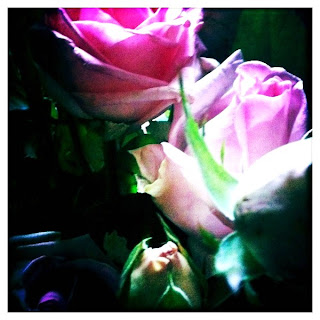Pietro Perugino (1446-1524), Woman
Tuesday 16 August 2011
Saturday 13 August 2011
I know that rose, like I know my name
Long way going to
Get my medecine
Sky's the autumn grey of a lonely wren
Piano from a window played
Gone tomorrow, gone yesterday
I found it in the street
At first I did not see
Lying at my feet
A trampled rose
Passing the hat in the church
It never stops going around
You never pay just once
To get the job done
What I done to me,
I done to you
What happened to the trampled rose?
In the muddy street
With the fireworks and leaves
A blind man with a cup I asked
Would he sing 'Kisses Sweeter Than Wine'
I know that rose,
Like I know my name
The one I gave my love,
It was the same
Now I find it in the street,
A trampled rose
I found it in the street
At first I did not see
Lying at my feet
A trampled rose
Passing the hat in the church
It never stops going around
You never pay just once
To get the job done
What I done to me,
I done to you
What happened to the trampled rose?
In the muddy street
With the fireworks and leaves
A blind man with a cup I asked
Would he sing 'Kisses Sweeter Than Wine'
I know that rose,
Like I know my name
The one I gave my love,
It was the same
Now I find it in the street,
A trampled rose
-Tom Waits/Kathleen Brennan
Listen to Alison Krauss and Robert Plant's beautiful version of this song here
Sunday 7 August 2011
The Triffids are coming
Triffids in West Lothian? Actually a quiet, hidden glade where curling tendrils of ferns have colonised to create this magical emerald landscape. Of course it immediately made me think of the 1951 post apocalyptic novel by John Wyndham.
This is also an opportunity to mention the work of the artist Catherine Charnock. She is from South Africa but now lives and works in Oxford. This mixed media drawing depicts triffid-like dandelions in a scene of desolation. You can see more of her work here
'The frogs are coming' 2007
Thursday 4 August 2011
Strings of sea gulls on a Summer's day
Everyone should get married outside, under trees laden with leaves, blossom and blooms and a lawn dappled with sunlight. In my opinion.
Tuesday 2 August 2011
A palette of pewter, sage, ash and milk
A gentle, textural combination showcasing the beauty of the dahlia. Victorians loved the flamboyance and variety of this flower and a prize of one thousand pounds was offered in 1826 for the first blue dahlia but no one has produced one (yet).
Monday 1 August 2011
Yedda Morrison
This work takes as its starting point the human desire for permanence, a desire made acute by the inevitability of our passing. If photography itself is a manifestation of this desire, our attempt to arrest or “still life,” plastic plants and flowers are a low-rent corollary. Suspended mid bloom and scattered throughout graveyards and empty parlors, they offer the promise of perennial youth, an eternal flowering, life ever after. Fake flowers both immortalize and render static the natural world. As such, they articulate a crisis between beauty and horror, desire and loss, artificiality and “the natural.”In our fall from the “pre” or “no” time of Eden, we have landed squarely in the artificial garden, the stilled remains of paradise. These sights of frozen or no time and the scale, duration and technology that make them possible, work to articulate a world where boundaries between the real and the artificial are increasingly blurred. If, in our contemporary moment, we are experiencing a gradual substitution of the machine for the body/mind, the image for the thing, and the simulation of the environment for the environment itself, then perhaps we are realizing Robert Smithson’s “frozen actuality,” the hallucinatory disjunction where “nothing is known but the impenetrable surfaces,” where “the artificial ingenuity of time allows no return to nature.”Bioposys are reconstituted artificial flowers and plants, mutant strains, improbable and permanent hybrids. The larger pieces attempt to envision a constellation of flower bombs, offering glimpses into possible futures of plastic and mishap. In others, the crude undersides begin to show through, revealing the cheap materials and human labor that ultimately destroy any illusions of “real.” And they offer more questions than answers; what happens when the “artificial” becomes a stand it for the “real?” When our pursuit of perfection, symmetry, longevity leads to ecological disaster? What is our relationship to “nature” as it mutates, rebels or ceases to exist? And what if we find the mutations themselves desirable? What constitutes beauty in an age of environmental crisis? Is simulation the new preservation? If a “real” plant is a statement from another time, are we already after nature?-Yedda Morrison, August 2007
Yedda Morrison is a visual artist and writer from San Francisco. These scanned images of artificial flowers from her Bioposy series have an ethereal beauty and a dark and tangible softness. They entice me to the shadows beyond, there's a mystery there waiting to be discovered. They are reminiscent of 17th century Dutch still life paintings but with a luminescence that makes them entirely modern and other-worldly. You can see more of Yedda's work on her website
Subscribe to:
Posts (Atom)

























